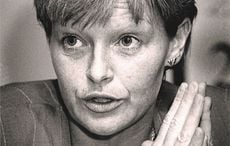Regrets, we’ve had a few. Oh yes, Irish public figures have made some errors of judgment in the past 10 years, as did we, the public, for letting them get away with it. Irish journalists Shane Ross and Fintan O’Toole have expertly uncovered them in books published this year – “The Bankers” in Ross’s case and the aptly named “Ship of Fools” in O’Toole’s. But for the public purse and for Ireland’s reputation, the revelations all came a bit too late.
It was a decade when Ireland’s Celtic Tiger roared, then whimpered, then scuttled off with its tail between its legs to someplace far away. Other scandals, such as those involving the Catholic Church, have proved even more shocking – there, past crimes are coming to light in revelations long overdue.
Here Irishcentral outlines events we wish had never happened, as we list just the top five scandals to plague the country this decade.
1. Bertie Ahern and the Mahon Tribunal
Who could have imagined that a finance minister wouldn’t have a bank account? Former Irish Taoiseach (president) Bertie Ahern certainly surprised the populace by revealing that he spent three years without one when he was finance minister between 1991 and 1994, even though he happened to be a trained account too.
The Mahon Tribunal dedicated 916 days to investigating Ahern’s finances between 2002 and 2008. The tribunal’s findings have yet to be published but the bad publicity forced Ahern to resign in 2008.
Another earlier former Taoiseach, Charles Haughey, a character hardly free of scandal himself, may have had it right when he remarked of Bertie years ago that he was "The most skilful, the most devious, the most cunning of them all.”
2. Banking scandals
Towards the end of the decade regulators began to investigate the nefarious goings on at Ireland’s biggest banks, and one in particular stood out. Anglo Irish Bank played a major role in Ireland’s housing bubble. In 2008 regulators belatedly realized that its chairman, Sean Fitzpatrick, had been transferring €87 million ($125 million) of bank loans temporarily from one bank account to another to prevent them from showing up on the bank’s annual report.
Meanwhile, in a building society called Irish Nation Wide, a character known as Fingers Fingleton (Michael Fingleton to his friends) gained a reputation of his own. Fingleton loaned huge sums of money without following protocol, in particular favoring friends in the media, politics and business. The result was that when global finances went awry, Irish Nation Wide recorded a €243 million ($350 million) loss and urgently needed government help. As of now, the Irish taxpayer is supporting €8 billion of its €10.4 billion loans. Fingleton, the CEO, departed with a pension fund of €27.6 million and a bonus of € million.
3. Ryan Report
After nine years of research the report published by Justice Ryan detailed horrifying abuse that about 35,000 children suffered in institutions run by the Catholic Church. Throughout the twentieth century up to the 1980s, thousands of Irish children were placed in reformatories, industrial schools and workhouses and endured violence and sexual abuse at the hands of certain religious orders.
Many of those children emigrated, and the Irish government now faces the need to address the issue of compensation.
4. Murphy Report
This “Report by Commission of Investigation into the handling by Church and State authorities of allegations and suspicions of child abuse against clerics of the Catholic Archdiocese of Dublin” unearthed more awful truths for the Catholic Church to face up, to and has shaken belief in a country long known for its loyalty to Catholicism. Dublin’s Archbishop Diarmuid Martin is still dealing with the fall-out from the report, including a spate of resignations of bishops who, the report said, did not prevent the abuse. As recently as Christmas Eve, two more of Dublin’s auxiliary bishops resigned.
5. Housing boom and bust
Nothing illegal occurred this time but what happened is still scandalous. The Irish government offered tax relief to encourage the construction of property. Caught up in an era of excess, Irish builders constructed reams of housing estates all over the country – often in areas that did not have proper facilities for large populations. The result is that Ireland’s countryside is now littered with of empty houses; hundreds of thousands of them are unoccupied.




Comments